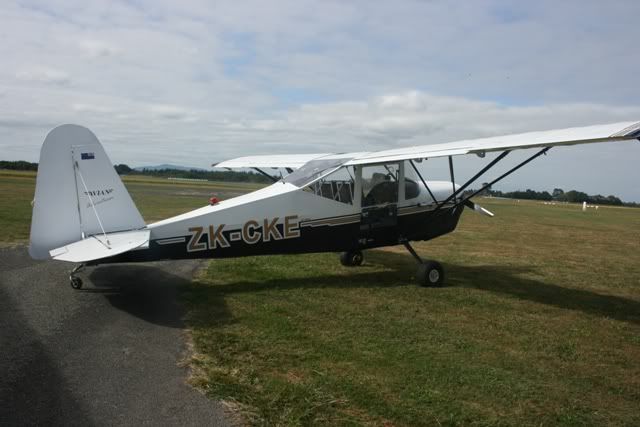|
|
Post by isc on Jan 5, 2019 22:24:59 GMT 12
At first the engines were fitted so that the props would turn upward towards the centre, the aircraft failed to get airborn, and it took a month to work out that they were losing all the lift on the centre wing, about 25%. Changing the engines over, so that they turned downward in the centre cured that problem. isc ps., it's not known if the 3rd prototype with the Allison engines ever flew
|
|
|
|
Post by davidd on Jan 6, 2019 8:44:48 GMT 12
As the later P/F-82s were configured as either long range escort fighters (2 pilots, plus a very large quantity of fuel), or night fighters (the latter carrying much additional equipment, including external pod for the radar equipment), it is probably not surprising that performance figures could vary a lot. The Twin Mustang was operated at weights of up to 12 tons (25,591 lbs), which was somewhat more than twice the weight of a late-model P-51. In fact the F-82 was only a little lighter than the PV-1 Ventura (one version of which was used as a night fighter in the Solomon islands and Bougainville in 1944), although the F-82 admittedly was of better aerodynamic form so possessed a very respectable speed range. However its turning circle must have been fairly generous at the higher weights. I don't think the long-range day fighters as built would have been of much use in Korea (particularly after introduction of the MiG 15), and it was only the night fighters sent to that war. I have always wondered how the idea of two pilots on ultra-long range escort missions would have fared in the real world, as I cannot imagine that the "resting" pilot could have got much sleep in the cockpit during a ten or twelve hour mission (I am guessing here about the duration of such missions). The USAAF did find out how long a pilot could stay alert and useful in the single-seat P-51s on their long escort missions with B-29s flying from Okinawa in the latter stages of WW2. We are led to believe that they returned to their bases so fatigued that they had to crane them out of their cockpits - seems that the human pilot was just not suited to these extreme conditions, no matter how well refreshed he was from his previous mission. I imagine that the sheer drudgery of staying aloft for very long periods with the noise and vibration from the engine just in front of you, and on oxygen, with little means of making yourself comfortable in the cramped cockpit (and sitting on your dinghy) was asking just a bit too much of the human animal, who was designed to run free in the fresh air. Reminds me of another idea (US Navy, must have been in period 1940/42) about operating very long range patrol bombers (flying boats) on missions of up to 72 hours aloft, with relief crews being provided, who were supposed to sleep for much of the time airborne in the thoughtfully provided rest bunks. I think they soon realized that this was asking way far too much of mere humans, and the whole Boeing PBB-1 programme was cancelled. Incidentally it seems to be very difficult to locate much useful information on this very large flying boat, particularly with regard to its operation on these planned long range/duration missions. Have any Board members come across more detailed information on this programme, and particularly anything to do with human performance under these conditions?
David D
|
|
|
|
Post by Bruce on Jan 6, 2019 21:09:38 GMT 12
Explain this further please regarding the loss of centre section lift. Is it related to the propeller tip vortices washing the fuselage in an undesirable sense? Airflow off the propellers moves along the aircraft in a spiral pattern. When the prop blades are travelling up in the middle, that is deflecting the airflow down. When it hits the centre section it effectively gives it a negative angle of attack, therefore its not generating any lift. The effect is particularly bad on the P-82 as the air is constrained in the channel between the fuselages, rather than disappating across the wing as on a conventional twin. By swapping the engines over, the airflow hit the wing in an upward direction, Positive AoA and therefore could properly generate lift. |
|
|
|
Post by isc on Jan 6, 2019 21:54:33 GMT 12
Although the centre section of wing is about 25% of the area it will have 30% plus of the lift because of the end plate effect of the two fuselages, and the prop wash could actually have been causing negative lift, not just neutral lift. isc
|
|



